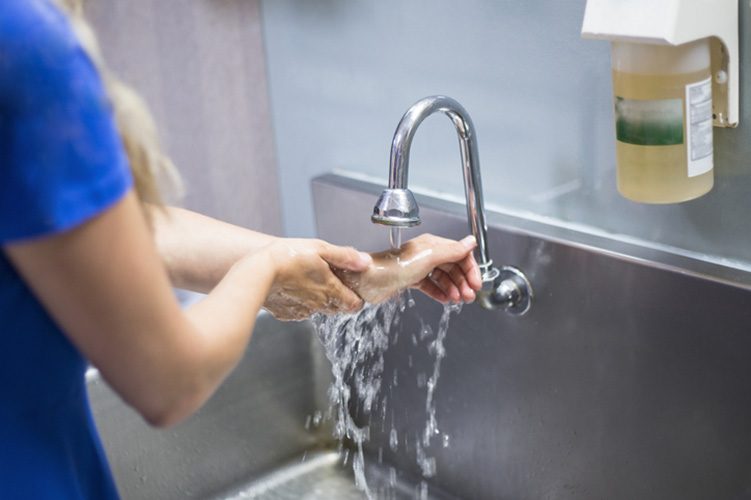Best Practices for Using a Pressure-Sustaining Control Valve
Accurate sizing, material compatibility, proper installation, regular maintenance and performance monitoring will optimize overall system performance.

Pressure-sustaining control valves are critical components in various water distribution and health-care systems. They ensure that downstream pressure remains above a predetermined setpoint. These valves help maintain system stability, prevent damage to equipment and optimize fluid distribution. To ensure efficient and reliable operation, it is essential to follow best practices when selecting, installing and maintaining these valves.
This article outlines key considerations and best practices for using pressure-sustaining control valves effectively.
Pressure-sustaining control valves maintain a minimum upstream pressure by throttling the flow of fluid based on pressure changes. When the upstream pressure drops below the setpoint, the valve partially or fully closes to maintain the desired pressure. Conversely, if the upstream pressure exceeds the setpoint, the valve opens to relieve excess pressure.
Best Practices for Selection
1. Accurate pressure requirements. Understand your system’s specific pressure needs. Determine and maintain the minimum upstream pressure, ensuring the selected valve can regulate within that range.
2. Valve sizing. Proper valve sizing is crucial. An undersized sustaining valve may not manage the required flow rate, while an oversized valve might result in poor control and instability. Use manufacturer sizing charts and software tools to determine the appropriate valve size based on flow rates and pressure conditions.
3. Material compatibility. Consider the controlled fluid’s chemical properties. Ensure the valve materials are compatible with the fluid to prevent corrosion, wear and leakage. Common materials include brass, stainless steel and various polymers.
4. Flow characteristics. Understand the valve’s flow characteristics, such as linear, equal percentage or quick opening. Choose a valve with the appropriate flow characteristics to match the system requirements and ensure stable control.
5. Pressure rating. Verify that the valve’s pressure rating exceeds the maximum pressure it will encounter in the system. This ensures the valve’s safety and longevity.
Installation Best Practices
1. Correct placement. Install the pressure-sustaining control valve at a location where it can effectively regulate upstream pressure. Typically, these valves are placed immediately downstream of pumps or other pressure-generating equipment.
2. Proper orientation. Follow manufacturer guidelines for valve orientation. Incorrect orientation can impair valve performance and cause undue wear. Ensure the valve is installed with the flow direction matching the arrow indicated on the valve body.
3. Secure mounting. Securely mount the valve to minimize vibrations and mechanical stress. Use appropriate supports and brackets to keep the valve stable and aligned with the piping system.
4. Piping considerations. Ensure the upstream and downstream piping is adequately sized to manage the flow rates and pressure conditions. Avoid abrupt bends and restrictions near the valve to prevent turbulence and pressure drops.
5. Strainers and filters. Install strainers or filters upstream of the valve to prevent debris from entering and damaging the valve. Regularly clean and maintain these filters to ensure unobstructed flow.
Operation and Maintenance
1. Regular inspection. Conduct regular inspections of the valve and associated components. Look for signs of wear, corrosion or leakage; early detection of issues can prevent costly downtime and repairs.
2. Calibration. Periodically calibrate the valve to ensure it maintains the correct setpoint. Use calibration tools and follow manufacturer instructions to adjust the setpoint as needed.
3. Cleaning and lubrication. Keep the valve clean and free from debris. Lubricate moving parts according to the manufacturer’s recommendations to reduce friction and wear.
4. Testing and troubleshooting. Perform regular functional tests to verify the valve’s operation. If issues are detected, follow a systematic troubleshooting approach to identify and rectify the problem. Common issues include diaphragm failure, seat leakage and improper adjustment.
5. Replacement of worn parts. Replace worn or damaged parts promptly. Maintain an inventory of critical spare parts to minimize downtime during maintenance activities.
Enhancing Valve Performance
1. System monitoring. Implement monitoring systems to continuously track pressure levels and valve performance. Automated monitoring can provide real-time data and alerts for deviations from the desired pressure range.
2. Training and documentation. Train personnel on proper valve operation and maintenance procedures. Keep detailed records of maintenance activities, calibrations and any issues encountered. Documentation helps track the valve’s performance over time and plan future maintenance.
3. Environmental considerations. Protect the valve and associated components from environmental factors such as extreme temperatures, moisture and corrosive atmospheres. Use protective coatings and enclosures if necessary.
4. Pressure-relief mechanisms. Incorporate pressure-relief mechanisms such as pressure-relief valves or rupture discs to handle unexpected pressure surges. These mechanisms provide an additional layer of protection for these valves.
Pressure-sustaining control valves play a vital role in maintaining stable pressure levels in fluid distribution systems. By following the best selection, installation, operation and maintenance practices, you can ensure these valves perform reliably and efficiently.
Accurate sizing, material compatibility, proper installation, regular maintenance and performance monitoring are key factors contributing to the effective use of pressure-sustaining control valves. Implementing these best practices will help prevent system disruptions, extend the valve’s lifespan and optimize overall system performance.





